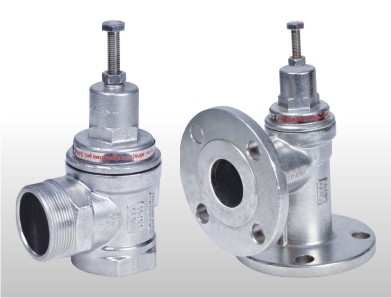Safety valves are an arrangement or mechanism to release a substance from the concerned framework in case of pressure or temperature surpassing a particular preset breaking point. The frameworks in the setting may be boilers, steam boilers, pressure vessels or other related frameworks. According to the mechanical arrangement, this one gets fitted into the master plan (part of the greater arrangement) called PSV or PRV that is pressure safety or pressure alleviation valves.
This sort of safety mechanism was largely actualized to counter the issue of an accidental blast of steam boilers. Initiated in the working of a steam digester, there were many systems that were then accommodated during the phase of industrial upset. And from that point forward this safety mechanism has made considerable progress and now accommodates various different aspects.

These aspects like applications, performance criteria, ranges, nation-based standards (nations like United States, European Union, Japan, South Korea give various standards) and so forth manage to differentiate or categorize this safety valve portion. In this way, there can be many various ways in which these safety valves get differentiated yet a typical range of bifurcation is as per the following:
- ASME
- Lift
- Stream controlled
- Balanced
- Force operated
- Full lift strong line
- Direct safety loaded
- Master
The American Society of Mechanical Engineers (ASME) I tap is a kind of safety valve which opens regarding 3% and 4% of pressure (ASME code for pressure vessel applications) while the ASME VIII valve opens at 10% overpressure and shuts down at 7%. Lift safety valves get additionally classified as low-lift and full lift. The stream control valves regulate the pressure or stream of a liquid whereas a balanced valve is utilized to limit the impacts instigated by pressure on operating characteristics of the valve in the setting.
A force operated valve is a sort of pressure alleviation valve in which an external force source is also used to calm the pressure. A proportional-help valve gets opened in a relatively stable manner as compared to increasing pressure. There are 2 kinds of direct-loaded safety valves, the first being diaphragms and the second: howls. diaphragms are valves that spring for the assurance of impacts of the fluid membrane while cries give an arrangement where the parts of rotating components and sources get shielded from the impacts of the fluid via howls.
In a master valve, the operation and even the initiation are constrained by the liquid which gets discharged via a pilot valve. Presently going to the master plan, the pressure safety valves based section gets classified as follows:
- Thermal pressure valves (utilized for the arrangement of security in case of overabundance pressure if the device encounters an increase of temperature).
- Stream valves (come into picture where larger quantities of gases or fluids should be released rapidly to remember the developing pressure).
- Stop valves (used to close a liquid or gas-based line and to stop the progression of materials).
So all taking all things together, pressure safety valves, pressure alleviation valves, help valves, pilot-operated alleviation valves, low-pressure safety valves, vacuum pressure safety valves and so forth complete the range of safety measures in boilers and related devices.
Aira Euro Automation is the Best Safety Valve Manufacturer in India, Aira has a wide range of pneumatic and manually operated industrial valves. They export their products in more than 20 countries including Gulf countries.
